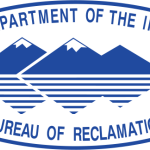- Industry: Government
- Number of terms: 15655
- Number of blossaries: 0
- Company Profile:
A U.S. Department of the Interior agency that oversees water resource management incuding the oversight and operation of numerous diversion, delivery, and storage projects the agency has built throughout the western United States for irrigation, water supply, and attendant hydroelectric power ...
Mass per unit volume. The total mass (solids plus water) per total volume. The weight of soil per unit volume, usually the weight of soil in one cubic foot (unit weight). The weight of a substance per unit of volume of the substance; for example, water has a density of 62.4 pounds per 1 cubic foot. Number per unit area of individuals of any given species at any given time (see population density).
Industry:Engineering
Individual designated by the Regional Director to assess and coordinate records and maintain proper management of hazardous waste activities in each region. The HWMC acts as primary contact with the Environmental Protection Agency (EPA) and designated state Hazardous Waste Management Offices in matters of hazardous waste activities within the region. See Project Hazardous Waste Coordinator (PHWC).
Industry:Engineering
Under the Public Utility Regulatory Policies Act (PURPA), a small power production facility (or small power producer) generates electricity using waste, renewable (water, wind and solar), or geothermal energy as a primary energy source. Fossil fuels can be used, but renewable resource must provide at least 75 percent of the total energy input. (See Code of Federal Regulations, Title 18, Part 292.)
Industry:Engineering
The United States Army Corps of Engineers provides quality, responsive engineering services to the nation which includes planning, designing, building and operating water resources and other civil works projects; designing and managing the construction of military facilities for the Army and Air Force; and providing design and construction management support for other Defense and federal agencies.
Industry:Engineering
The reservoir capacity exclusive of and above the dead capacity from which the stored water is normally not available because of operating agreements or physical restrictions. Under abnormal conditions, such as a shortage of water or a requirement for structural repairs, water may be evacuated from this space. The inactive capacity extends from the top of inactive capacity to the top of dead capacity.
Industry:Engineering
The reservoir capacity exclusive of and above the dead capacity from which the stored water is normally not available because of operating agreements or physical restrictions. Under abnormal conditions, such as a shortage of water or a requirement for structural repairs, water may be evacuated from this space. The inactive capacity extends from the top of inactive capacity to the top of dead capacity.
Industry:Engineering
A hard, impervious layer, composed chiefly of clay, that is cemented by relatively insoluble materials, that does not become plastic when mixed with water, and definitely limits the downward movement of water and roots. A cemented or compacted layer of soil near the surface that is essentially impermeable to water. A hard, tight soil. A hard layer that may form just below plow depth on cultivated land.
Industry:Engineering
Any device which will allow fluid or air to pass through it in only one direction. A special valve with a hinged disc or flap that opens in the direction of normal flow and is forced shut when flows attempt to go in the reverse or opposite direction of normal flow. A device preventing backflow in pipes. Water can flow readily in one direction but any reversal of the flow causes the check valve to close.
Industry:Engineering
The reservoir capacity assigned to regulate reservoir inflow for irrigation, power, municipal and industrial use, fish and wildlife, navigation, recreation, water quality, and other purposes. It does not include exclusive flood control or joint use capacity. It extends from the top of the active conservation capacity to the top of the inactive capacity (or dead capacity where there is no inactive capacity).
Industry:Engineering
The reservoir capacity assigned to regulate reservoir inflow for irrigation, power, municipal and industrial use, fish and wildlife, navigation, recreation, water quality, and other purposes. It does not include exclusive flood control or joint use capacity. It extends from the top of the active conservation capacity to the top of the inactive capacity (or dead capacity where there is no inactive capacity).
Industry:Engineering
